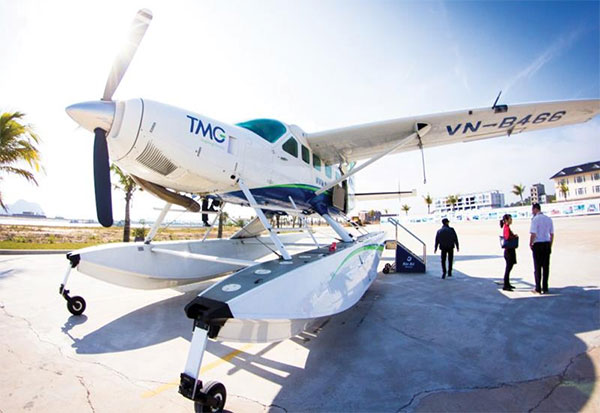|
AirAsia joint venture’s prospects uncertain
On April 1, Bloomberg reported
that Malaysian low-cost carrier AirAsia planned to partner up with two
domestic firms to start an airline in Vietnam. However, available information
draws questions over the plan’s legitimacy and feasibility.
Little information

Talking to VIR, an official from the Department of
Enterprise Management under the Ministry of Transport said that AirAsia has
yet to submit an official application to establish a joint venture with Gumin
and Hai Au Aviation.
Civil Aviation Authority of Vietnam said the first time
it heard of the news was from the media.
“Hai Au, Gumin, and AirAsia. None of them has applied
for a certificate to do business in air transport,” said Vo Huy Cuong, deputy
director of CAAV.
Hai Au has a license to provide general air transport
for commercial purposes, with a fleet of four amphibious airplanes.
Gumin, which operates in management consultancy, has
only started operation on March 29.
Official information is forthcoming only from Thien
Minh Group.
According to the company’s website, the new airline is
going to start operation in 2018 after being ratified by the Vietnamese
government.
The new airline is going to provide “high-quality
service at affordable prices.”
An expert said that it is currently unclear whether this
airline is going to be a new entity or part of Hai Au.
However, given the time that it normally takes to
obtain a license to fly commercially, the joint venture is unlikely to get a
license by the end of 2018.
Vietstar One-member Co., Ltd., which applied for a
license to provide air transport services in July 2016, is still waiting.
Narrow window
This is AirAsia’s third attempt in 10 years to join
hands with a Vietnamese partner to set up an airline.
Earlier, Air Asia made an agreement with Vinashin (now
Vietnam Shipbuilding Industry Corporation) in 2007 and with Vietjet in 2010
to set up the second foreign-invested airline in Vietnam after Jetstar
Pacific.
For one reason or another, these plans failed to
materialise.
At the moment, AirAsia has two airlines that fly
frequently to Vietnam, Thai AirAsia (FD), which flies from Thailand, and
AirAsia Berhad (AK) which flies from Malaysia.
There was also Indonesia AirAsia which used to fly from
Indonesia, but at the moment this activity has been suspended.
The Vietnamese aviation market sees ripe competition
from Vietnam Airlines and SkyViet/VASCO, as well as two low-cost airlines,
namely Vietjet and Jetstar Pacific, the former of which is considered to be
on par with big regional airlines, such as AirAsia, in terms of capital and
governance ability.
The growth in demand still outpaces the growth in
supply. However, in the first quarter, demand showed signs of slowing
growth.
Moreover, the price of airplane fuel is increasing
sharply, affecting the profit of airlines.
The average price in January this year was $65.15 per
barrel, up 1.57 per cent compared to December 2016.
CAPA Centre for Aviation expects that the profit margin
for global air transport will decrease from 8.3 per cent in 2016 to 7.4 in
2017 and further to 6.6 in 2018, due to the increasing price of fuel and the
surplus in airplanes as airlines have been buying too many of them recently.
“AirAsia is very late to the party in Vietnam and as a
result faces huge challenges,” said Brendan Sobie, Singapore-based chief
analyst at CAPA Centre for Aviation at a recent interview with Bloomberg on
the issue.
“The market is now well served by two low-cost
carriers, VietJet and Jetstar Pacific. The rate of growth will likely slow in
the coming years as the market is now more mature.”
VIR
|
Thứ Tư, 5 tháng 4, 2017
Đăng ký:
Đăng Nhận xét (Atom)
Không có nhận xét nào:
Đăng nhận xét